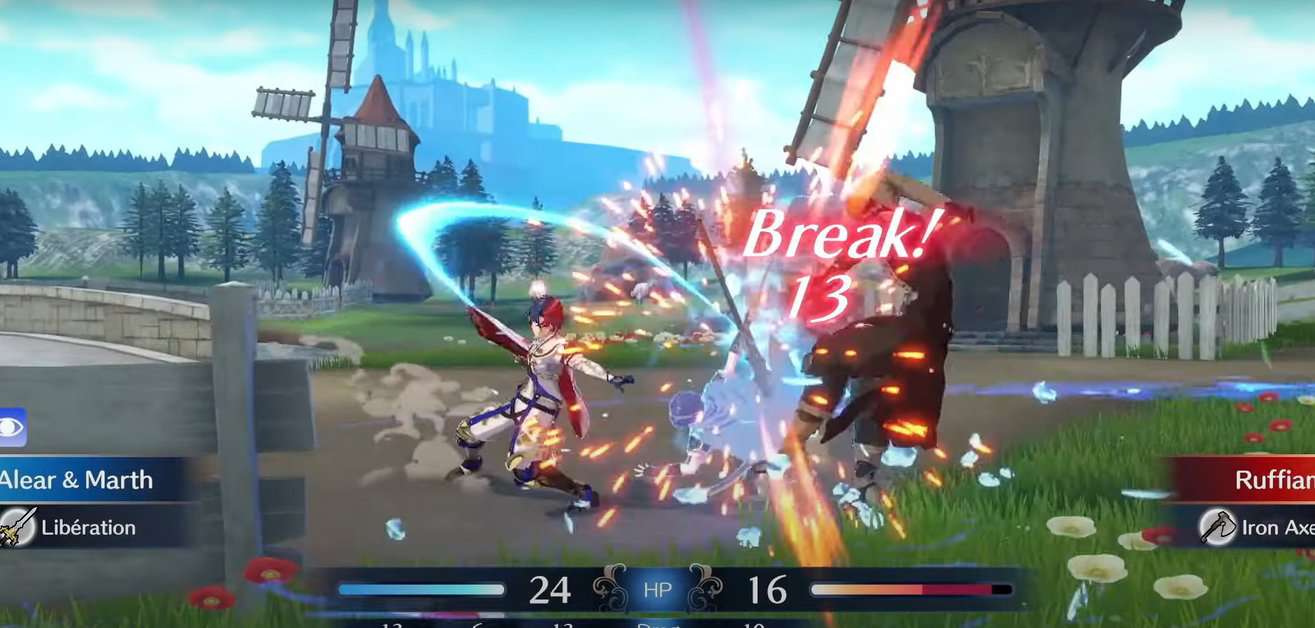Fire Emblem Engage Weapon Triangle system assists players in understanding the weapon they are holding is strong against which weapons. This has made it much easier for players to understand the overall weapon mechanics. Over it, each weapon is color coded, which tells players the advantages or disadvantages of the weapon before they use it in combat.
The weapon triangle system has been a staple of the Fire Emblem franchise combat. However, with each new installment, the weapon triangle system sees some tweaks and additions. Due to those changes, some players might be struggling with the weapon triangle in Fire Emblem Engage.
In this fire emblem guide, we will delve into the details of the new Weapon triangle system. Here we will discuss what changes the makers have brought into it and how players can use this for their benefit
How does the weapon triangle work in Fire Emblem Engage
One of the many returning features in FE Engage is the Weapon Triangle system, alongside introducing a couple of new weapon types into the arsenal to diversify the gameplay in Fire Emblem Engage. Each weapon in the game is strong against some other weapon and, at the same time, weak against others.
Sending a unit of yours against an enemy when your unit takes extra damage from them is sure suicide. So weapon triangle system will help you understand which weapon is strong and weak against which to make a strategy to tackle the particular weapon in FE Engage.
To help you make a strategy, we have listed down all weapon types and how they fit in the FE Engage weapon triangle, like against which type they are strong and weak.
Weapons strengths and weaknesses
This is the list of weak and strong weapons against one another within the weapon triangle of FE Engage.
Arts
- Strong against: Knives, Bows, and Tames
Axes
- Strong against: Lances
- Weak against: Swords
Bows
- Strong against: Flying units
- Weak against: Arts
Lances
- Strong against: Swords
- Weak against: Axes
Swords
- Strong against: Axes
- Weak against: Lances
Impact of weapons and emblems on weapon triangle
Besides the obvious weapon selections mentioned above, there are certain aspects of the combat system in Fire Emblem Engage that can’t be easily broken down and fit into the weapon triangle system. Those combat mechanics do benefit from certain aspects of the triangle but the benefits aren’t as straightforward.
To help you understand how certain weapons and units fit in the weapon triangle of FE Engage, we have provided a further explanation below.
Combat Arts
In Fire Emblem Echoes, Combat Arts were more of a skill learned through repeatedly mastering a specific weapon. However, that’s not the case anymore in Fire Emblem Engage. Combat Arts have replaced Brawling as the new type of weapon that is only exclusive to characters with Martial Monk Class. Characters in this class are highly skilled with healing and can protect themselves using Combat Arts.
The advantage of using Combat Arts is they particularly have no weaknesses. A character wielding Combat Arts cannot break. They are strong against Bows, tomes, and knives.
Tomes
A couple of units, like Armored units, are immune to the Break status, which we will explain below. However, they have a generally low Res Stat that makes them weak against Tomes.
Knives
Knives aren’t that great in particular, but they can deal some damage to enemies by inflicting poison on them. These are great for supporting and taking down bulky units with a significant health pool. By attacking them, they gain stacks of poison damage that increase per turn depending on the stacks you have on a single target.
Emblems reversing the Weapon Triangle
A couple of characters reverse their weaknesses and strengths when engaged in Fire Emblem Engage. They are Corrin and Roy.
When Engaged, Corrin’s Dual katanas and Roy’s Lancereaver get strong against lances and weak against axes.
Why players should aim for an advantage
It’s always better for players to use the Weapon triangle as an advantage as it will make you understand which enemy you can fight against. If you attack an enemy, and your weapon is potent against it, the break mechanic will occur.
Players then can take two more hits as the enemy won’t be able to defend. However, the second hit can’t be made with the first unit that had broken the enemy.
You should keep in mind that the enemy, too, can use this triangle system, and if they hit you with a more potent weapon, you will be broke too. Therefore, be very careful as you are doing the entire thing
Understanding the Fire Emblem Engage break mechanic
The newly introduced Break System in Fire Emblem Engage allows you to strategize more and deal a massive blow to your foes, disabling them for the next turn if you have a more potent weapon than your opponents.
If you deal damage to an enemy with a weapon that they are weak against, you have a chance to inflict the Break status on them. That means they cannot counterattack you until their next turn. Say your unit uses a Lance, if you prioritize an enemy that uses a Sword, your unit has a chance to inflict Break status on them with its attacks.
However, there are some exceptions to this as well. You cannot Break enemies with Bows, Knives, and Magical tomes, but you can break them by using Art.
